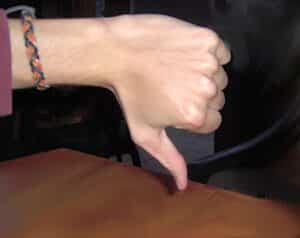Binge-Eating Disorder | Childhood Obesity News

Strangely, for such a prevalent disorder, binge eating retains an aura of mystery. Even the esteemed Mayo Clinic can only offer guesses as to its cause. Certain constants are of course observable, including the fact that more women than men are victims. Other genetic factors are also suspected. Whether genetic or purely behavioral in origin, family history is a red flag.
People in their late teens and early 20s are vulnerable, along with those who have adopted the lifestyle variant known as “dieting,” or formalized restrictions imposed either by an outside program or a self-created plan.
Another predisposing condition is some kind of mental health problem, and this is a tough one because it feeds upon itself. The mental health element includes negative self-regard, and this works both ways because when one feels hostile toward oneself, and toward one’s own abilities and accomplishments, the answer always seems to be “Go eat a lot.”
Of course, this offers no alleviation at all, because afterward, the person is assailed by even more self-hate, and rushes to go eat another pile of food. Binge eating is in fact the legendary perpetual-motion machine, tirelessly maintaining itself through endless cycles of cause and effect, which then becomes the next cause, leading to the next effect, and so on into infinity. What can stop such an elegantly designed chain reaction?
A world of triggers
Certain situations will guarantee a binge, and depending on the individual, the trigger may be any size or shape, and wear any disguise. The binge reaction can be set off by an event as traumatic as a romantic breakup. Or it might be based on something as trivial as the habitual pairing of entertainment with eating — the conviction that watching a movie on TV must always be accompanied by a snack session that somehow winds up lasting for an hour and a half.
The trigger can be a certain food, which causes the person to apologetically or facetiously declare, “I’m addicted to chocolate-chip cookies, almost straight from the oven, with the chips still all melty.” Whether or not cookie addiction is recognized by the medical establishment, it becomes a fact in that person’s life.
There are social consequences of course, which include avoiding certain people who might identify the binge pattern and urge the eater to seek help. While social ramifications can be very upsetting, the real trouble starts when the body begins to break down. There is, obviously, weight gain.
But even if the person is not bothered by that, there are also, says the Mayo Clinic, “joint problems, heart disease, type 2 diabetes, gastroesophageal reflux disease (GERD), poor nutrition and some sleep-related breathing disorders.” On the mental side, watch out for depression, anxiety, substance abuse, and even suicidal ideation and behavior.
In the emotional equation, actual bulk is almost irrelevant. No matter what shape the body is in, the average binge-eater is dissatisfied with it.
This condition is defined by compulsion — the conviction of a simple inability to stop eating — and, generally, by excess. It is characterized by periods of resistance, alternating with episodes of simply giving in and letting the disorder have its way. Symptoms vary, but may include:
Eating even when you’re full or not hungry.
Eating very fast during eating binges.
Eating until you’re uncomfortably full.
Often eating alone or in secret.
(To be continued…)
Your responses and feedback are welcome!
Source: “Binge-eating Disorder,” MayoClinic.org, undated
Image by Fabrice Florin/CC BY-SA 2.0








